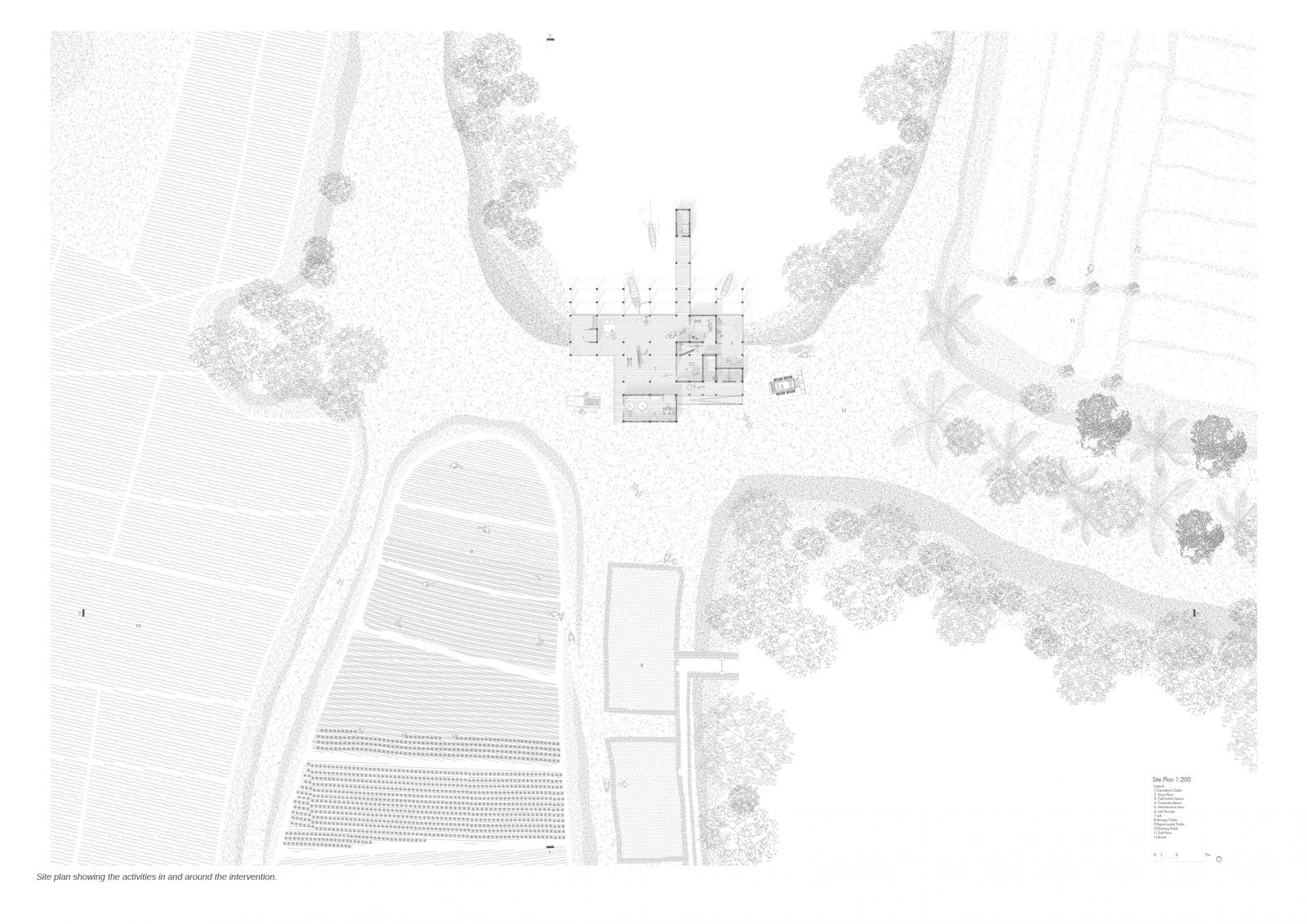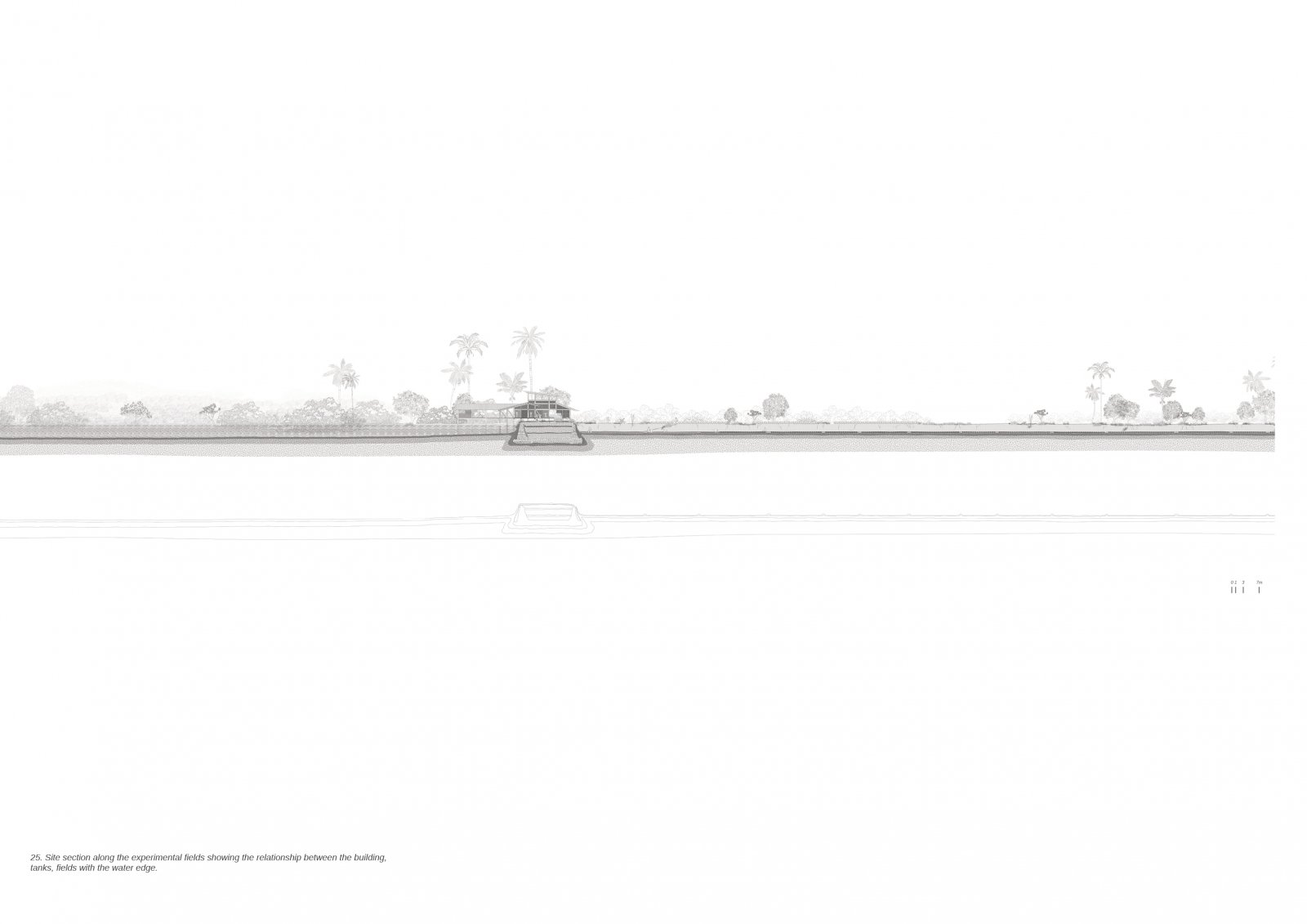Your browser is out-of-date!
For a richer surfing experience on our website, please update your browser. Update my browser now!
For a richer surfing experience on our website, please update your browser. Update my browser now!
The program aims to heal the degrading landscape through native practices that existed in Goa for centuries. A workshop caters to the repair and maintenance of the khazan landscape while the laboratory participates in improving the fertility of the soil for paddy cultivation, using halophilic bacteria that grow naturally in the salt pans. As soil remediation is a slow process, a coconut husk salt production unit provides the people with the required monetary incentive to participate in the process. The waste produced by this unit acts as a raw material for the bacteria to be introduced into the soil. An edge of the intervention has been designed to serve boats as a transportation medium.
View Additional Work








